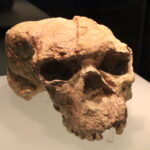A new study published in Nature provides the most detailed look yet at how the brain uses prior knowledge to guide decision-making. The research, carried out by the International Brain Laboratory, created the first brain-wide map showing how mice rely on expectations formed from multiple past experiences to make choices in the present.
Decision-making is one of the most important functions of the brain. It often requires balancing new sensory information with what we already know. For example, if someone always finds food in a certain spot, they are more likely to check that place first in the future, even if they cannot see or smell the food right away. Scientists wanted to understand how such “priors,” or prior expectations, are represented across the brain and how they affect behavior.
The study trained mice to perform a visual task where the likelihood of a stimulus appearing on the left or right side changed in blocks of trials. Over time, the animals learned these probabilities and adjusted their decisions accordingly. In other words, the mice didn’t just respond to what they saw in the moment; they integrated several past choices to bias their decisions.
By recording brain activity across multiple regions simultaneously, the researchers discovered that this prior information was not confined to a single decision-making area. Instead, it was encoded in a distributed way across sensory, associative, and motor regions, including the orbitofrontal and parietal cortex. Interestingly, the prior was not based on the sensory stimulus itself but on the animal’s own past actions, suggesting that memory of previous choices played the dominant role in shaping expectations.
The results also revealed that mice integrated prior knowledge nearly optimally. This means they used it in a mathematically efficient way, helping them perform better when sensory information was weak or ambiguous. The study showed that even under uncertain conditions, the brain has built-in mechanisms for blending memory and perception to improve outcomes.
These findings have broad implications. They suggest that the brain’s ability to use prior knowledge is a general property, spread across multiple neural systems rather than localized to one area. Understanding this could shed light on how decision-making breaks down in neurological conditions such as schizophrenia or addiction, where priors may be miscalibrated. It could also inspire new approaches in artificial intelligence, where integrating memory with real-time data is a major challenge.
Story Source: Brain-wide representations of prior information in mouse decision-making, published in Nature, licensed under CC BY 4.0.
Note: Content may be edited for style and length.







